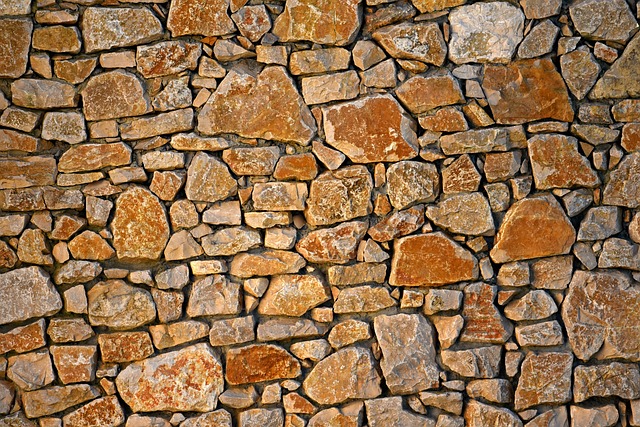Stem wall damage, often overlooked in older homes or poorly maintained properties, can lead to significant structural issues due to shifting soil, improper construction, or extreme weather. Regular inspections and timely repair are vital to prevent severe problems. Crack repair, especially stem wall repair, is a cost-effective strategy that saves expenses and increases property value. Choosing the right materials is crucial for durability; concrete or mortar patches are DIY solutions for minor cracks, while larger cracks may require advanced composite or polymeric products. Correct restoration involves thorough inspection, cleaning, filling with epoxy/polyurethane, sanding, and proper maintenance to prevent future damage and water intrusion.
Crack repair in stem walls, often overlooked, is a crucial aspect of home maintenance. Stem walls, bearing the structural load between foundations and floors, are prone to damage from settlement cracks. This article explores affordable crack repair solutions for optimal wall stability. We’ll guide you through understanding stem wall damage, choosing suitable repair materials, and providing a step-by-step restoration process. Learn how to avoid common mistakes and maintain your repaired stem walls for years to come, ensuring both safety and aesthetics in your living space.
Understanding Stem Wall Damage and Its Causes

Stem wall damage, often overlooked, can be a significant issue in older homes or those with poor maintenance. It refers to the deterioration or cracking of the stem walls, which are typically made of brick, stone, or concrete and form the foundation of external walls. This type of damage can arise from various factors, such as shifting soil, improper construction, or extreme weather conditions like heavy rainfall or strong winds.
One common cause is ground movement due to changes in moisture content in the soil. Over time, this can lead to cracks that not only weaken the structural integrity but also allow water penetration, causing further damage and potential mold issues. Another factor could be a lack of proper drainage around the building, which may contribute to moisture buildup, especially in areas with high humidity or frequent rainfall. Regular inspections and prompt repair of stem wall cracks are essential to prevent more severe structural problems down the line, thus emphasizing the need for effective stem wall repair solutions.
The Benefits of Affordable Crack Repair

Crack repair, when done affordably and efficiently, offers numerous benefits that extend beyond aesthetics. For homeowners and property managers, it’s a game-changer in terms of cost savings and structural integrity. A simple stem wall repair, for instance, can prevent more serious damage by stopping cracks from spreading, which could lead to costly foundation issues. By addressing cracks early and choosing affordable solutions, you’re not just fixing the visible problem but also safeguarding against potential future expenses.
Moreover, prompt crack repair can enhance the overall value of your property. Small repairs now can forestall significant structural damage later, thereby keeping your home or building in better condition. This is particularly important for rental properties or real estate that’s on the market, as it ensures a more attractive and valuable asset. With affordable options available, there’s no reason to delay crack repair, ensuring both peace of mind and financial wisdom.
Identifying Suitable Materials for the Job

When undertaking affordable crack repair, especially for stem wall repairs, selecting the right materials is paramount to achieving a durable fix. Concrete and mortar are common choices due to their strength and cost-effectiveness. For smaller cracks, a simple concrete patch or mortar mix can be sufficient. These options are straightforward to apply and set quickly, making them ideal for DIY projects.
However, for larger or structural cracks, incorporating fiber-reinforced composites or polymeric repair products might be more suitable. These advanced materials offer exceptional strength and flexibility, ensuring the crack doesn’t reappear. They are also more resistant to moisture, which is crucial for stem wall repairs as these areas often experience high humidity levels. Choosing the right material based on crack size, location, and structural integrity is key to long-lasting crack repair.
Step-by-Step Guide to Stem Wall Crack Restoration

Stem wall crack restoration is a cost-effective solution for repairing damage caused by structural issues or environmental factors. Here’s a step-by-step guide to help you tackle this task:
1. Inspection and Preparation: Begin by thoroughly inspecting the affected area, identifying the extent of cracks, and assessing any underlying causes. Clear the crack of debris, ensure proper ventilation in the space, and gather all necessary tools and materials, including epoxy or polyurethane-based filler, a putty knife, and sandpaper.
2. Cleaning and Filling: Using a wire brush or scrubber, clean the crack to remove loose debris and dust. Apply the chosen filler material into the crack using the putty knife, ensuring it fills the entire length and width of the crack. Allow the filler to cure according to the manufacturer’s instructions before sanding gently with fine-grit sandpaper to achieve a smooth finish that blends with the surrounding stem wall.
Common Mistakes to Avoid During the Repair Process

When undertaking crack repair, whether it’s for a stem wall or any other structure, there are common mistakes to avoid that can compromise the integrity of your work and lead to future damage. One of the biggest blunders is neglecting preparation; proper cleaning and inspection before repairing cracks is essential. This includes removing loose debris, ensuring the area is dry, and identifying the root cause of the crack, which could be structural issues or settling. Using the wrong materials or techniques can also result in weak repairs that won’t last. Concrete repairs require specific mixes designed for durability, and improper application can lead to further damage.
Another error is rushing the process, which often leads to subpar results. Repairing cracks takes time, and hasty work might not allow the material to bond correctly with the existing surface. Always follow manufacturer instructions and guidelines for curing and drying times. Moreover, overlooking the size and depth of cracks can be problematic. Smaller cracks might seem less damaging, but if left unaddressed, they can expand and cause structural issues over time. Properly assessing and addressing crack dimensions is crucial for long-lasting repairs, especially in stem wall repair scenarios.
Maintaining Your Repaired Stem Wall

After a successful stem wall repair, maintaining your structure is key to ensuring longevity and preventing future damage. Regular inspection is the first step; check for any signs of cracks, bulges, or leaks as these could indicate underlying issues that need addressing promptly. It’s also crucial to keep the area clear of debris and ensure proper drainage to avoid water accumulation, which can weaken the repair.
Proper maintenance includes sealing any gaps around pipes and fixtures to prevent moisture intrusion and using appropriate materials for touch-ups to match the existing stem wall. Avoiding heavy traffic or excessive loading on the repaired area is essential, as well as considering a protective coating to shield against harsh weather conditions, thereby extending the life of your stem wall repair.
